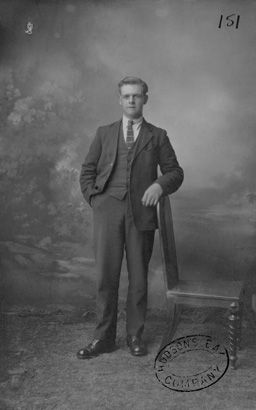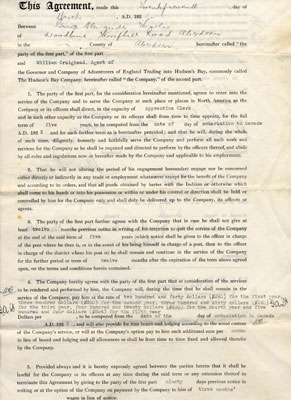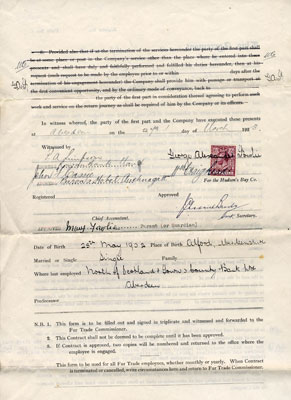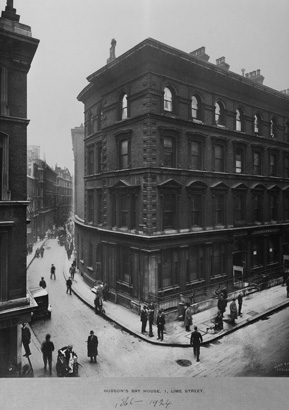Joining Up
For many young men, joining a fur trade company offered the prospect of adventure and perhaps of wealth. The social and economic climate of Scotland during the eighteenth and nineteenth centuries was such that many men believed they would have better opportunities if they travelled overseas. Fur trading operations, such as the Hudson's Bay Company, offered some security and contracts were usually for five years in the first instance. Although the working conditions were tough and families were separated for long periods, the wages on offer were usually better than those available in Scotland.
Recruitment patterns for the Hudson's Bay Company shifted considerably over the years. When the Company was first founded in 1670 it was a very small operation, and most employees were hired in the south of England. As the Company expanded and diversified throughout the eighteenth century, the majority of the labourers and skilled tradesmen, who were known as servants, were recruited in the Orkney Islands. The officer classes, who included clerks, factors and chief traders, were mainly recruited from other parts of Scotland as well as in southern England. In time, as European settlement in Canada became more permanent, the Hudson's Bay Company was able to cut its expenses by recruiting locally. Many of the sons of its staff and their Aboriginal wives followed their fathers into the fur trade, though they often had fewer opportunities for upwards progression in this hierarchical organisation.
Towards the late nineteenth century, with the drop in the market for furs and the formation of the Dominion of Canada in 1867, the Hudson's Bay Company's business shifted focus to retail sales and commercial property. Fur buying continued in some parts of Canada, however, and reliable staff were required to manage trading operations in the Arctic and boreal forest. Though labourers were still hired locally, the northeast of Scotland became the key recruiting ground for clerks and store managers. Adverts were placed in local newspapers and company agents recruited young men from the city and nearby towns and villages. Local schools, such as Robert Gordon's College in Aberdeen, were also targeted by the Hudson's Bay Company.
Some recruits to the Hudson's Bay Company, for example, Aberdeen man, William R. Mitchell, were encouraged to apply by existing staff. He joined in 1914 and worked at Churchill with Henry Moir and later at Chesterfield in the Eastern Arctic. He eventually rose to the position of Inspector of the James Bay district, and during the 1920s was involved in selecting new apprentices. William R. Mitchell's collection of Inuit tools, carvings and other artefacts can be seen in Marischal Museum. Other men were recruited because they already had family connections to the fur trade. Taylor Third from Aberdeenshire, for example, joined the Hudson's Bay Company in 1926, and was posted to York Factory where he worked as an apprentice clerk. His brother, George, had worked for the Company since 1922, and perhaps had recommended it as a suitable career option for a young man. Ernest Hampton, meanwhile, was inspired to join the Hudson's Bay Company by his brother-in-law, Harry Ambrose, who worked for the Company at Great Whale River, Quebec, in the 1920s, and who told him about his experiences on a visit to Scotland. Hampton joined the company shortly afterwards.

Taylor Third's application photograph, 1926.
© Hudson's Bay Company Archives, Archives of Manitoba, A.32/56 fo. 151
During the 1950s through to the 1970s, men continued to join the Hudson's Bay Company for reasons similar to those of their professional ancestors. Although the prospect of earning great wealth had diminished, employees still earned a higher salary than would have been the case had they remained in Scotland. The possibilities for adventures also motivated some of them. After being interviewed in the northeast of Scotland, or perhaps at Hudson Bay House in London, the new recruits were ready to sign their contracts and prepare to leave their homes and family for a new life overseas.







